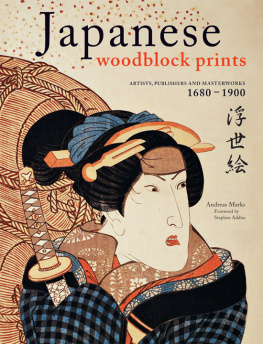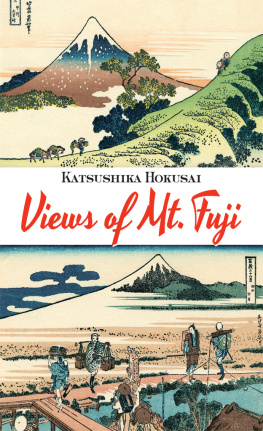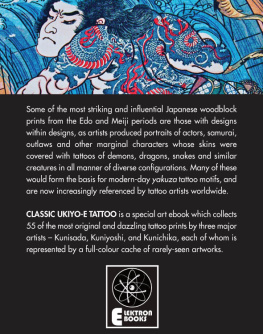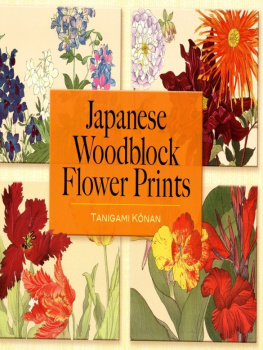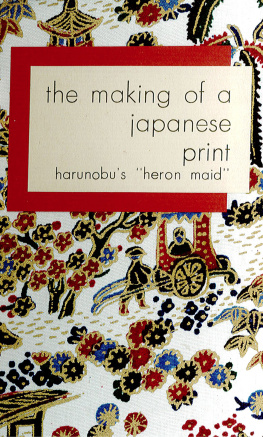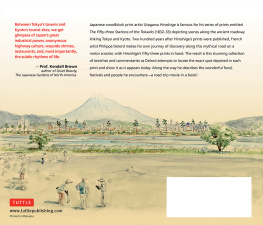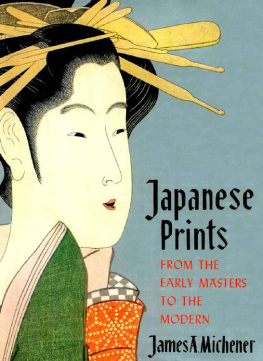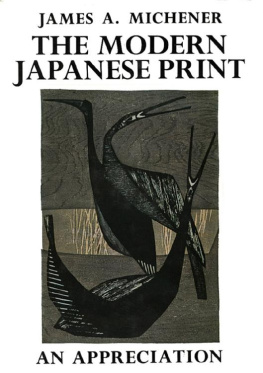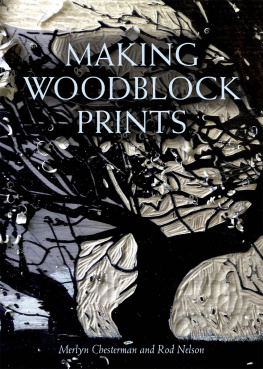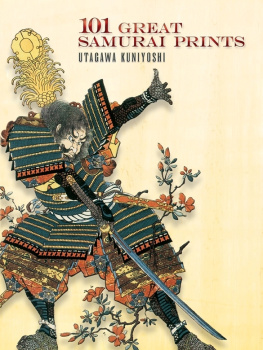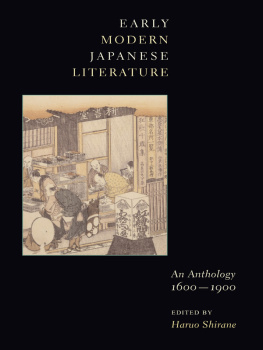I would like to acknowledge the invaluable encouragement and support of many people in the realization of this book. My deep gratitude goes to the private collectors who generously opened their excellent collections for me and supported this project, Arendie and Henk Herwig, Peter Rieder, Gisela Mller, and Erich Gross. I owe special thanks to the following colleagues at other museums for granting me access to their superb collections and supporting this publication wholeheartedly: Gankow Sakai, Director of the Japan Ukiyo-e Museum in Matsumoto, Professor Matthi Forrer, Head of the Research Department of the National Museum of Ethnology, Leiden, Professor Willibald Veit, Director of the Museum of East Asian Art, Berlin, and especially Dr. Alexander Hofmann, Curator of Japanese Art at the Museum of East Asian Art, Berlin, Susan Tai, Elizabeth Atkins Curator of Asian Art at the Santa Barbara Museum of Art, and Dr. Shawn Eichman, Curator of East Asian Art at the Honolulu Academy of Arts. A warm thanks is extended, moreover, to all staffmembers of these institutions as well as Waseda University Library and Sendai City Museum for their generous help along the way.
Further, I am indebted to Professor Stephen Addiss of the University of Richmond, Virginia, for writing the introduction. Many more friends and colleagues supported me along the way, notably Regula Preiswerk, Shind Shigeru, Kno Yumi, Arnold Satterthwait, and Professor Akama Ry of Ritsumeikan University, Kyoto, and his staff. My gratitude goes to Eric Oey of Tuttle Publishing for his guiding and undertaking of this project. I also want to thank my editor William Notte for his great skills and encouragements and his anonymous readers for their many useful suggestions. Finally, I want to thank my wife Yoko for her patience and support and for taking care of me so well, feeding me with my energy boosters, sencha, and my beloved Venchi 75% dark chocolate.
Kiyonobu 

16641729
Given name: Shbei. Art surname: Torii.
Born in Osaka in 1664, Kiyonobu is believed to be the son of the Osaka actor of female roles ( onnagata ) Torii Kiyomoto (16451702). Kiyomoto moved to Edo in 1687 and in 1690, started to paint kanban-e , pictures for billboards displayed in front of the theaters to announce performances, and gradually acquired a monopoly of billboard pictures and picture programs ( banzuke-e ) for the four main theaters. Kiyonobu succeeded as head of the family in 1702 and continued in the line of his father. He began to illustrate books and design prints and is traditionally seen as the first teacher of the Torii School establishing the style of the Torii School described as gourd legs and earthworm outlines ( hytan ashi, mimizu gaki ). He was especially active in depictions of the kabuki theatre as seen in signboards, playbooks, hanging scrolls, and single-sheet prints and is believed to have illustrated many of the unsigned playbooks as well. But Kiyonobu did not restrict himself to the theater and drew also beautiful women and erotica ( shunga ).
His earliest work seems to be illustrations in the book One Hundred Actors of All Ages ( Kokon shibai hyakunin isshu ) from 1693, and he is believed to have begun composing actor prints in 1698. He was the first to design single-sheet actor prints that capture the expressive pose ( mie ) and the rough acting style ( aragoto ) of the actors of the time. In the late 1710s, he and many others concentrated on the small and narrow hosoban format which facilitated greater productivity. Kiyonobu is thought to have designed around one hundred erotic prints, usually sold in sets of ten or twelve and mounted in albums or as hand scrolls. At least eight such sets are known to have survived.
Until 1760, prints with the signature Kiyonobu exist. Since 1725, the style of the signature is very different and it is therefore believed that Kiyonobu retired at that time and a second Kiyonobu continued to use the name. Kiyonobu died in the summer of 1729 and is buried at Somei Cemetary (Somei Reien). His posthumous Buddhist name is Jgenin Kiyonobu Hitachi Shinji.
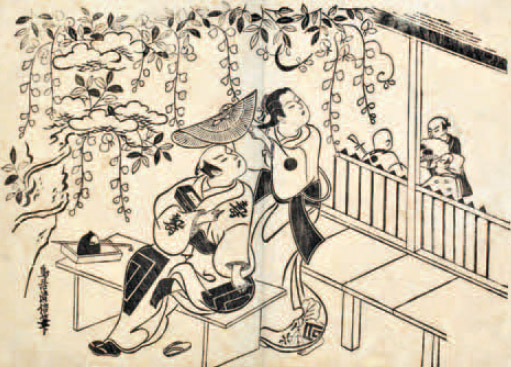
1719 The actors Ichikawa Danjr II as Hiranoya Tokubei and Sanogawa Mangiku as Ohatsu of the Tenmaya in the play Sogazaki Shinj, Nakamura Theater, IV/1719. 21.6 x 29.8 cm, sumizuri-e. Honolulu Academy of Arts: Gift of Dr. & Mrs. C.M. Cooke, 1935 (10382). Mut 2005, no. 49.
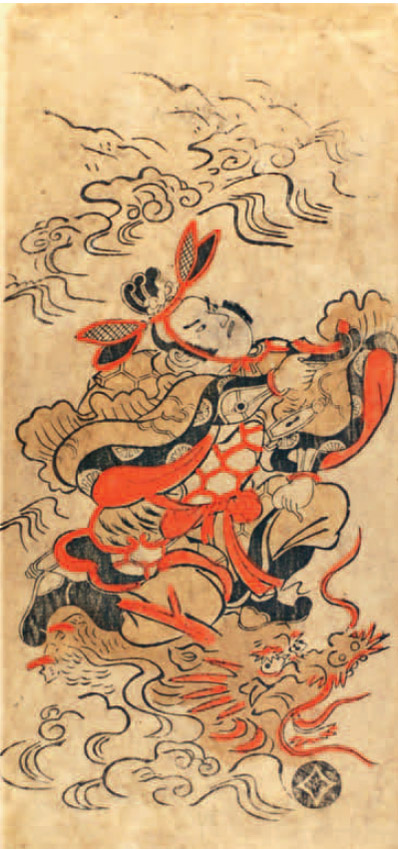
1710s Kiyonobu (attr.) Ch Ry (Chin. Zhang Liang), riding a dragon, returns the shoe. (Left sheet of a diptych). Hosoban tan-e. National Museum of Ethnology, Leiden, The Netherlands.
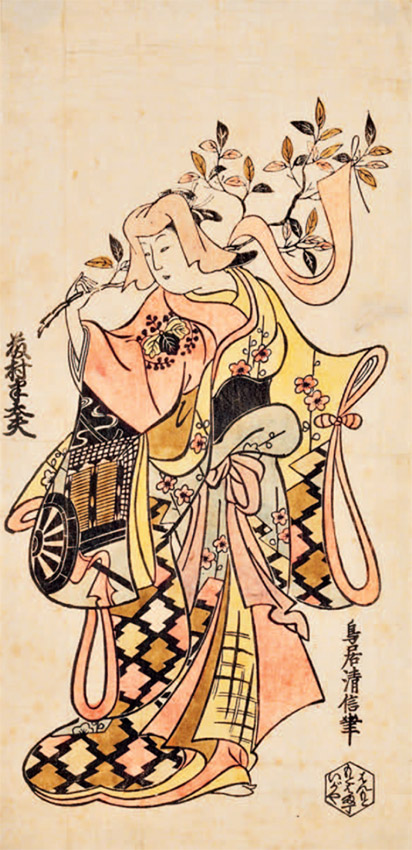
1720 The actor Fujimura Handay I as Nishikigi in the play Michinoku Taiheiki, Nakamura Theater, XI/1720. Hosoban tan-e. Publisher: Igaya Kanemon. Honolulu Academy of Arts: Gift of James A. Michener, 1954; photography by Tim Siegert (13429). Mut 2005, no. 26.
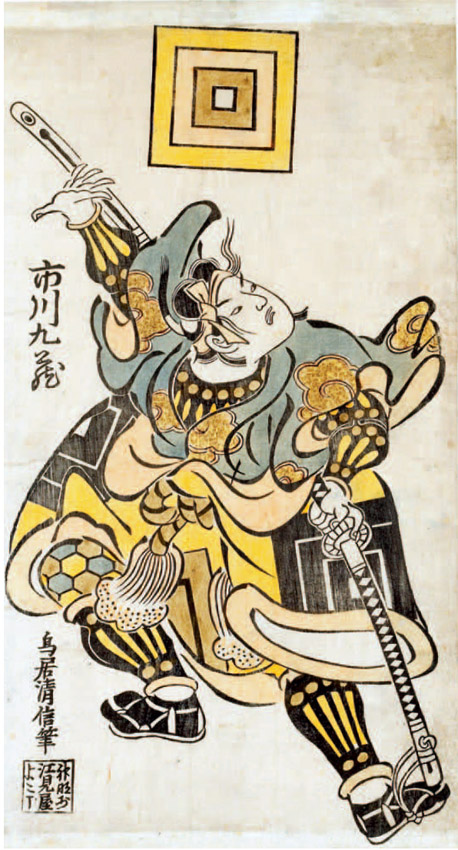
1718 Kiyonobu. The actor Ichikawa Kuz I as Miura Arajir in the play Zen kunen yoroi kurabe, Morita Theater, XI/1718 Hosoban tan-e Publisher: Emiya Kichiemon Honolulu Academy of Arts: Gift of James A. Michener, 1988; photography by Tim Siegert (20503) Ref.: Mut 2005, no. 9
Shunsh 

17261793
Given names: Ysuke, Ysuke (from 1774). Art surname: Katsukawa. Art names on paintings: Jgasei, Kyokursai, Kyokursei, Ririn, Rokurokuan, Yji. Jar-shaped seal with the character rin (grove).
Born presumably in 1726, Shunsh initially studied painting under Katsukawa Shunsui (act. c.174464) and the Hanabusa school painter K Skoku (17301804). His earliest known prints date from 1764 when he was nearly forty years old. Together with Bunch he played the central role in the development of realistic portrayal of actors. Most important are their illustrations in the book A Picture-book of Stage Fans ( Ehon butai gi ) from 1770. The novel half-length portraits of actors in fan shapes was an approach that was continued by Shunsh in his celebrated series Fans of the East ( Azuma gi: 177582).
After Bunch ceased to design actor prints in the 1770s, Shunsh became pre-eminent in this field, providing more realistic portraits that emphasize the individual characters of the actors. Overall, he designed several hundred actor prints in the small, narrow hosoban format, sometimes composed as diptychs, triptychs, or even pentaptychs.
Shunsh was active in other genres as well, working for at least 18 different publishers. His early beauties like the series Eight Views of Fukagawa ( Fukagawa hakkei ) are strongly influenced by Harunobu. Around 1772 he collaborated with Shigemasa in producing the chban-size series Silkworm Cultivation ( Kaiko yashinai gusa ). From c.177273 date forty-eight chban-format designs of the first full-color print series illustrating the Tales of Ise ( Ise monogatari ). At the top of each print is a stylized cloud border, enclosing the poem from the depicted episode.

